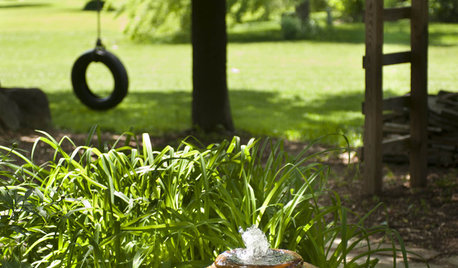Franklinia alatamaha
Josh
19 years ago
Related Stories

GARDENING AND LANDSCAPINGHow to Give Your Garden More Soul
Feel more at home in your garden by giving it deep, personal meaning
Full StoryMaybe this query should go in the Propagation or Native Plants Forum but hope it fits in Botany too. I've always been intrigued with the story of the "lost Franklinia" and the fact that all trees now in cultivation are from the one plant grown in the Bartram gardens. I know that there are Orchids and probably other plants now extinct in the wild which are propagated from existing plants in cultivation, but is the Franklinia the only plant which has been propagated from just one individual plant? josh
Here is a link that might be useful: Franklinia alatamaha


skatayama
JoshOriginal Author
Related Professionals
New Bedford Landscape Architects & Landscape Designers · Allentown Landscape Architects & Landscape Designers · Cary Landscape Architects & Landscape Designers · College Park Landscape Contractors · Deerfield Beach Landscape Contractors · East Hanover Landscape Contractors · Glendale Heights Landscape Contractors · Mashpee Landscape Contractors · Tavares Landscape Contractors · Tustin Landscape Contractors · Waipahu Landscape Contractors · Wheat Ridge Landscape Contractors · Bonney Lake Fence Contractors · Framingham Fence Contractors · Norwalk Fence Contractorsdeeproots
JoshOriginal Author
nsboyd1210
bahia
JoshOriginal Author
serenoa
JoshOriginal Author
JJeane
serenoa
JoshOriginal Author
gregor_austria
JoshOriginal Author
keyapaha
JoshOriginal Author
keyapaha
JoshOriginal Author
Ron_B
JoshOriginal Author
keyapaha
JoshOriginal Author
sam_md
JoshOriginal Author
Fledgeling_
keyapaha
Fledgeling_
keyapaha
Fledgeling_
Fledgeling_
sugarhill
rpurdy52
JoshOriginal Author
Virginia
JoshOriginal Author
Virginia
JoshOriginal Author
jeff_al
JoshOriginal Author
plantinellen
taxonomist
brandon7 TN_zone7
sam_md
riverwoodsphil
lcpt
ken_ecotads_org
keking
wvjoan
davidlmo
sam_md